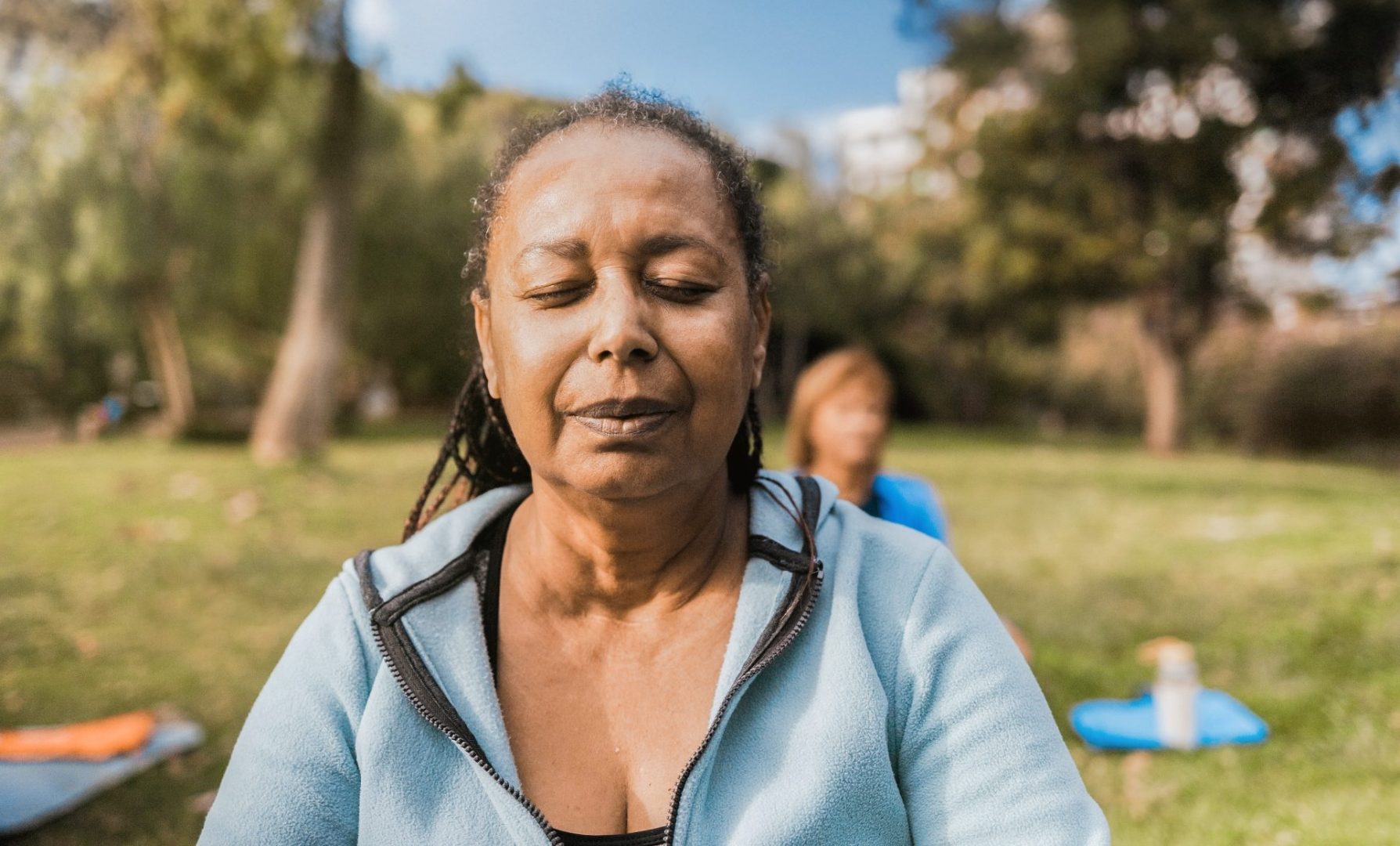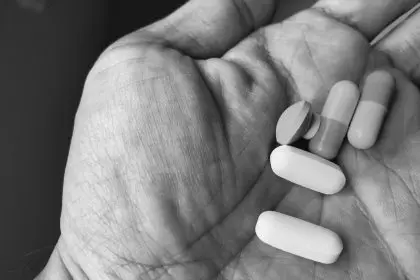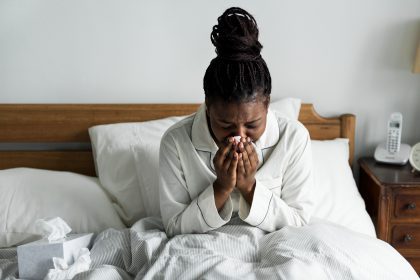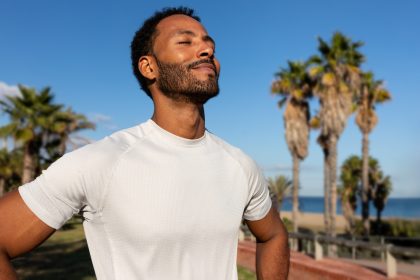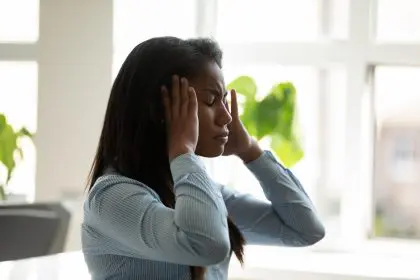Understanding these normal respiratory shifts can help distinguish between expected aging and concerning symptoms
The subtle respiratory transition most never notice
Breathing changes with age occur so gradually that most people fail to recognize them until well advanced. The respiratory system undergoes predictable alterations beginning around age 30, with measurable function declining approximately 1% annually thereafter. This progression happens imperceptibly day-to-day but creates noticeable differences when comparing physical capabilities across decades. The cumulative effect explains why climbing stairs feels dramatically different at 70 than it did at 20, even for individuals maintaining consistent fitness levels.
The aging respiratory system experiences both structural and functional modifications. Lung elasticity decreases as elastin fibers deteriorate and aren’t fully replaced, similar to how skin loses firmness with age. The chest wall simultaneously stiffens as rib cage joints lose flexibility and become more calcified. These complementary changes reduce the mechanical efficiency of breathing, requiring more effort to move the same volume of air in and out of the lungs.
Respiratory muscles, particularly the diaphragm and intercostals, undergo the same aging process affecting all muscle groups. They experience both sarcopenia (loss of muscle mass) and decreased contraction strength. These changes typically progress faster in sedentary individuals and slower in those maintaining physical activity. The practical result manifests as reduced respiratory endurance, with breathing during sustained activity becoming noticeably more difficult even before shortness of breath develops.
The oxygen transfer system ages at the microscopic level too. The alveoli – tiny air sacs where oxygen enters the bloodstream – decrease in both number and function over time. The surface area available for gas exchange diminishes by up to 15% between ages 30 and 70, while the capillary network surrounding these sacs similarly reduces. This change explains why maximum oxygen uptake (VO2 max) declines with age even among dedicated athletes.
Measurable breathing changes across the decades
The metrics of respiratory function create a clear picture of age-related changes. Vital capacity – the maximum amount of air exhaled after a deep breath – decreases approximately 25-30% between ages 30 and 70. This reduction limits the breathing reserve available during physical exertion, contributing to earlier onset of breathlessness during activity. The change affects everyday function less noticeably than exercise capacity, as routine activities rarely require full vital capacity.
Forced expiratory volume (FEV1) – measuring how much air can be forcefully exhaled in one second – drops significantly with age. This metric, critically important for diagnosing conditions like asthma and COPD, naturally declines about 30ml annually after age 30. The reduction reflects decreased elastic recoil in the lungs and airways, making rapid exhalation progressively more difficult. This change explains why blowing out birthday candles becomes a greater challenge with each passing decade.
Residual volume – the air remaining in lungs after maximal exhalation – increases with age as lungs lose elasticity and become less able to compress fully. This trapped air effectively reduces the functioning lung capacity available for fresh air exchange. The increased residual volume explains why older adults often feel they cannot “empty” their lungs completely during deep breathing exercises, despite using proper technique.
Respiratory rate subtly increases with age to compensate for these efficiency losses. While a healthy young adult typically breathes 12-16 times per minute at rest, this rate often increases to 16-20 breaths per minute by age 70. This adaptation maintains adequate oxygen levels despite other aging changes but comes with metabolic costs, as faster breathing requires more energy to sustain. The change happens so gradually that most people remain unaware their breathing pattern has altered.
The impact on everyday activities and exercise
Shortness of breath during activity develops earlier as breathing mechanics change. The ventilatory threshold – the exercise intensity at which breathing becomes noticeably more difficult – occurs at progressively lower exertion levels with advancing age. This shift explains why activities once performed while conversing easily eventually require breath conservation, with talking becoming challenging during the same exertion level.
Recovery time after exertion lengthens with age due to both cardiovascular and respiratory changes. The time required for breathing to return to baseline after climbing stairs or similar activities increases noticeably across decades. While a 30-year-old might normalize breathing within 30-60 seconds after climbing several flights, the same recovery might take 2-3 minutes for a healthy 70-year-old, even without underlying disease.
Weather sensitivity increases as the respiratory system ages. Cold air often triggers breathing discomfort in older adults who previously experienced no such reaction. This sensitivity stems from both decreased airway responsiveness to temperature changes and reduced warming capacity in the upper airways. The practical impact makes winter outdoor activities more challenging for many older adults, who may need to modify exercise habits seasonally.
Air quality tolerance diminishes with age as protective mechanisms decline. The lung’s ability to clear particles and resist irritants decreases, making older adults more vulnerable to pollution, smoke, and other respiratory irritants. This increased sensitivity explains why many people develop new reactions to environmental factors in later life, despite decades of previous exposure without apparent effects.
Distinguishing normal aging from concerning symptoms
Normal age-related breathing changes never cause significant shortness of breath at rest. While breathing mechanics become less efficient, these changes alone should not cause breathing difficulty during sedentary activities or while sleeping. The development of dyspnea (difficult or labored breathing) at rest always warrants medical evaluation, as this symptom indicates something beyond normal aging affecting the respiratory system.
Sudden or rapidly progressive changes in breathing capacity fall outside normal aging patterns. The typical age-related decline progresses slowly and steadily over decades rather than weeks or months. Any abrupt deterioration in breathing capacity, particularly when accompanied by other symptoms like cough, wheezing, or chest pain, requires prompt medical attention to identify potential acute or subacute conditions requiring treatment.
Exercise capacity naturally declines with age but should not drop precipitously without explanation. While the typical 65-year-old cannot match their 25-year-old exercise performance, the decline follows a predictable trajectory in healthy aging. When someone who comfortably walked three miles suddenly struggles to complete one without a clear cause like recent illness, this change suggests a problem beyond normal aging that deserves medical evaluation.
Positional breathing changes provide important clues distinguishing aging from disease. Normal aging does not cause orthopnea (breathing difficulty when lying flat) or paroxysmal nocturnal dyspnea (awakening gasping for breath). These specific symptoms typically indicate cardiac issues rather than respiratory aging and always warrant medical assessment. Similarly, breathing difficulties that worsen when bending forward suggest different underlying problems than normal aging changes.
How lifestyle factors accelerate or slow respiratory aging
Smoking dramatically accelerates age-related breathing changes, with smokers experiencing lung aging rates approximately double those of non-smokers. The additional damage to airways, lung tissue, and blood vessels compounds normal aging changes, creating premature functional declines often mistakenly attributed to age alone. This accelerated deterioration explains why many smokers experience “old lungs” decades before their chronological age would predict.
Sedentary lifestyle hastens respiratory decline by failing to maintain respiratory muscle strength and cardiopulmonary efficiency. Regular aerobic activity preserves breathing capacity more effectively than any other intervention, with physically active 70-year-olds often demonstrating better respiratory function than sedentary 50-year-olds. This protective effect highlights the critical importance of maintaining activity levels throughout life to preserve breathing efficiency.
Obesity creates mechanical disadvantages that compound age-related breathing changes. Excess weight increases the work required for chest expansion while simultaneously reducing diaphragm movement through abdominal pressure. These effects explain why weight gain often noticeably affects breathing comfort, particularly during activity or when lying flat. The impact becomes increasingly significant with age as other compensatory mechanisms decline.
Occupational exposures create cumulative effects that manifest more prominently with age. Years of exposure to dust, chemicals, fumes, or other respiratory irritants cause incremental damage that may remain subclinical during youth but emerges as functional impairment when combined with normal aging changes. These cumulative impacts explain why retirement sometimes reveals breathing limitations previously masked by the body’s compensatory mechanisms while younger.
Maintaining optimal respiratory function through the years
Aerobic exercise provides the most effective protection against age-related respiratory decline. Activities that temporarily increase breathing rate and depth train both respiratory muscles and the oxygen utilization system. The beneficial adaptation occurs regardless of starting age, with studies showing significant improvements even when beginning regular exercise programs in the 70s or 80s. The protective effect operates on a use-it-or-lose-it principle, with consistent activity preserving function more effectively than any medication.
Specific breathing exercises complement general aerobic activity for respiratory maintenance. Techniques like diaphragmatic breathing, pursed-lip breathing, and breath control during activity all help maintain respiratory muscle function and efficiency. These targeted exercises prove particularly beneficial for preserving the controlled exhalation that often deteriorates most significantly with age. Regular practice improves both breathing mechanics and subjective breathing comfort during daily activities.
Posture maintenance significantly impacts breathing efficiency across all ages but becomes increasingly important with advancing years. The progressive forward curvature of the spine (kyphosis) common in older adults restricts lung expansion and diaphragm movement. Regular posture exercises focusing on upper back strength and mobility help preserve the chest cavity space necessary for optimal breathing. This intervention explains why posture correction often improves breathing comfort even without directly addressing the respiratory system.
Environmental modifications can significantly enhance breathing comfort as age-related sensitivities increase. Maintaining optimal indoor humidity (40-50%) prevents the airway irritation caused by overly dry air. Air filtration systems reduce particle exposure that older respiratory systems clear less efficiently. Temperature management, particularly avoiding extreme cold exposure, prevents the bronchospasm that affects many older adults. These practical adaptations often prove more effective than medications for maintaining comfortable breathing in later years.
When to seek medical attention for breathing changes
Progressive shortness of breath during increasingly moderate activities warrants medical evaluation to distinguish between normal aging and potential disease. While some increased breathing effort during exertion naturally occurs with age, the progression should remain gradual over years rather than months. More rapid deterioration might indicate conditions like heart failure, anemia, or lung disease that benefit from early intervention.
Chronic cough accompanying breathing changes requires medical assessment regardless of age. Persistent cough, especially when productive or associated with specific positions or activities, does not represent normal aging. This symptom may indicate conditions ranging from post-nasal drip and gastroesophageal reflux to more serious concerns like chronic bronchitis or malignancy. The specific cough characteristics and associated symptoms help determine appropriate evaluation approaches.
Nighttime breathing disturbances deserve particular attention and evaluation. Normal aging does not cause sleep apnea, though its prevalence increases with age due to changes in upper airway muscle tone and control. The condition’s characteristic loud snoring interrupted by breathing pauses requires proper assessment, as treatment significantly improves both quality of life and long-term health outcomes. Similar concerns apply to new-onset snoring or gasping episodes during sleep.
Breathing asymmetry offers another important warning sign distinguishing disease from normal aging. The aging respiratory system changes symmetrically, affecting both lungs equally. When breathing feels different on one side than the other, or when chest movement appears uneven, these asymmetric changes suggest specific pathology rather than normal aging. This situation requires evaluation to identify potential causes like pleural effusion, pneumonia, or diaphragm dysfunction.
Future directions in understanding respiratory aging
Emerging research suggests inflammation plays a central role in accelerating respiratory aging. Chronic low-grade inflammation, common in older adults and increased by conditions like obesity and autoimmune disorders, appears to hasten the deterioration of lung tissue elasticity and function. This understanding opens potential pathways for interventions targeting inflammatory processes to preserve respiratory function longer. Anti-inflammatory approaches, both pharmacologic and lifestyle-based, represent promising areas for future respiratory aging management.
Stem cell research offers potential future approaches to regenerating aging lung tissues. Early-stage studies demonstrate that various stem cell populations can potentially differentiate into specific lung tissue types and promote repair processes. While practical applications remain years away from clinical implementation, this research direction provides hope for eventually addressing the structural changes currently considered irreversible aspects of respiratory aging.
Personalized respiratory aging predictions may soon guide individualized prevention strategies. Genetic markers, early life respiratory patterns, environmental exposure histories, and other factors together create unique respiratory aging trajectories for each person. Advanced modeling of these variables may eventually allow more precise identification of individual risk factors and targeted interventions to address specific vulnerabilities before functional declines become apparent.
Improved understanding of the brain-lung connection reveals how central control mechanisms change with age. The neural regulation of breathing undergoes age-related alterations that affect everything from oxygen sensing to breathing pattern adjustments during activity. This emerging knowledge helps explain why some breathing changes occur independently of mechanical respiratory system alterations and suggests potential interventions targeting these control systems rather than just lung tissues.
The aging respiratory system undergoes predictable changes affecting structure, function, and sensory experience throughout later life. Understanding these normal transitions helps distinguish between expected aging and concerning symptoms requiring medical attention. While some degree of respiratory change remains inevitable with advancing years, lifestyle factors significantly influence both the rate and impact of these changes. With appropriate activity, breathing practices, and environmental modifications, many people maintain comfortable and efficient breathing well into advanced age despite the natural biological transitions occurring within their respiratory systems.

